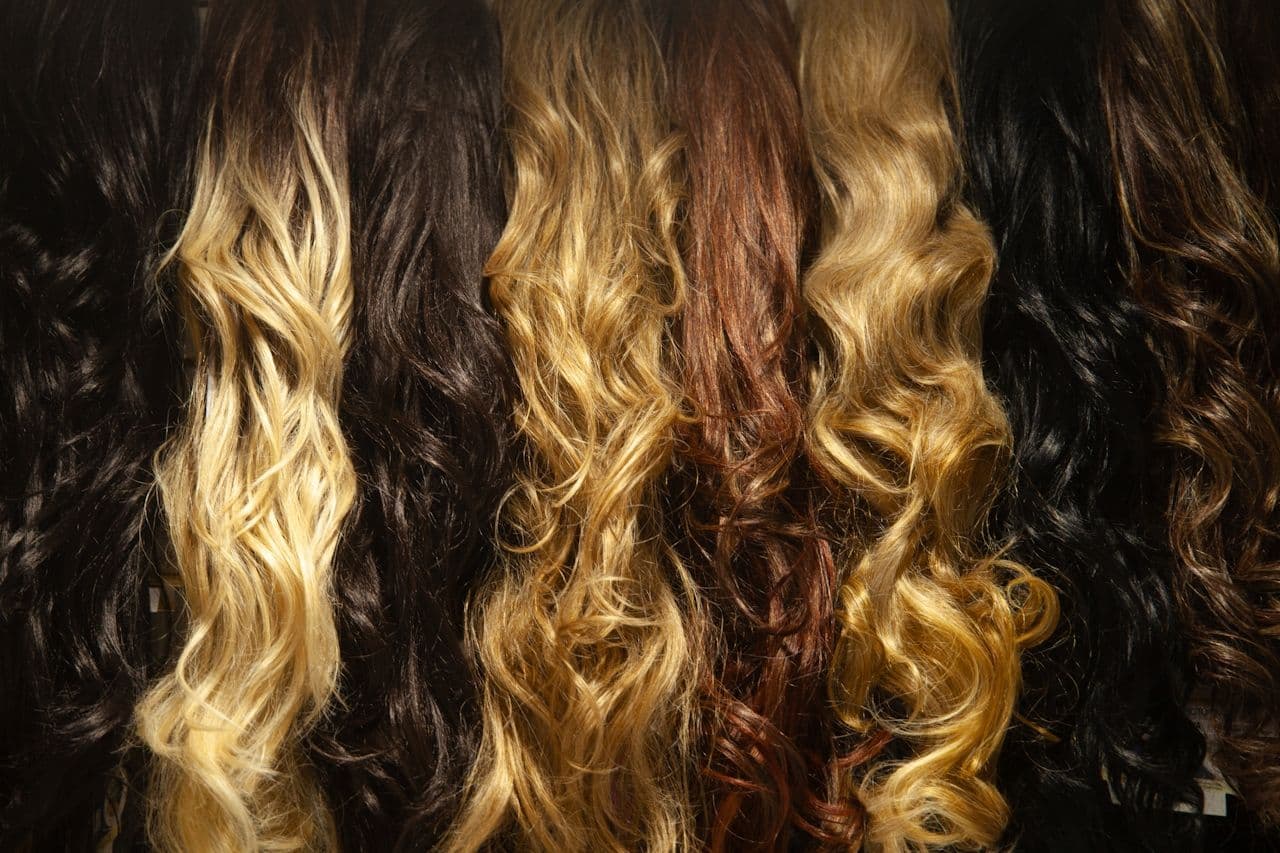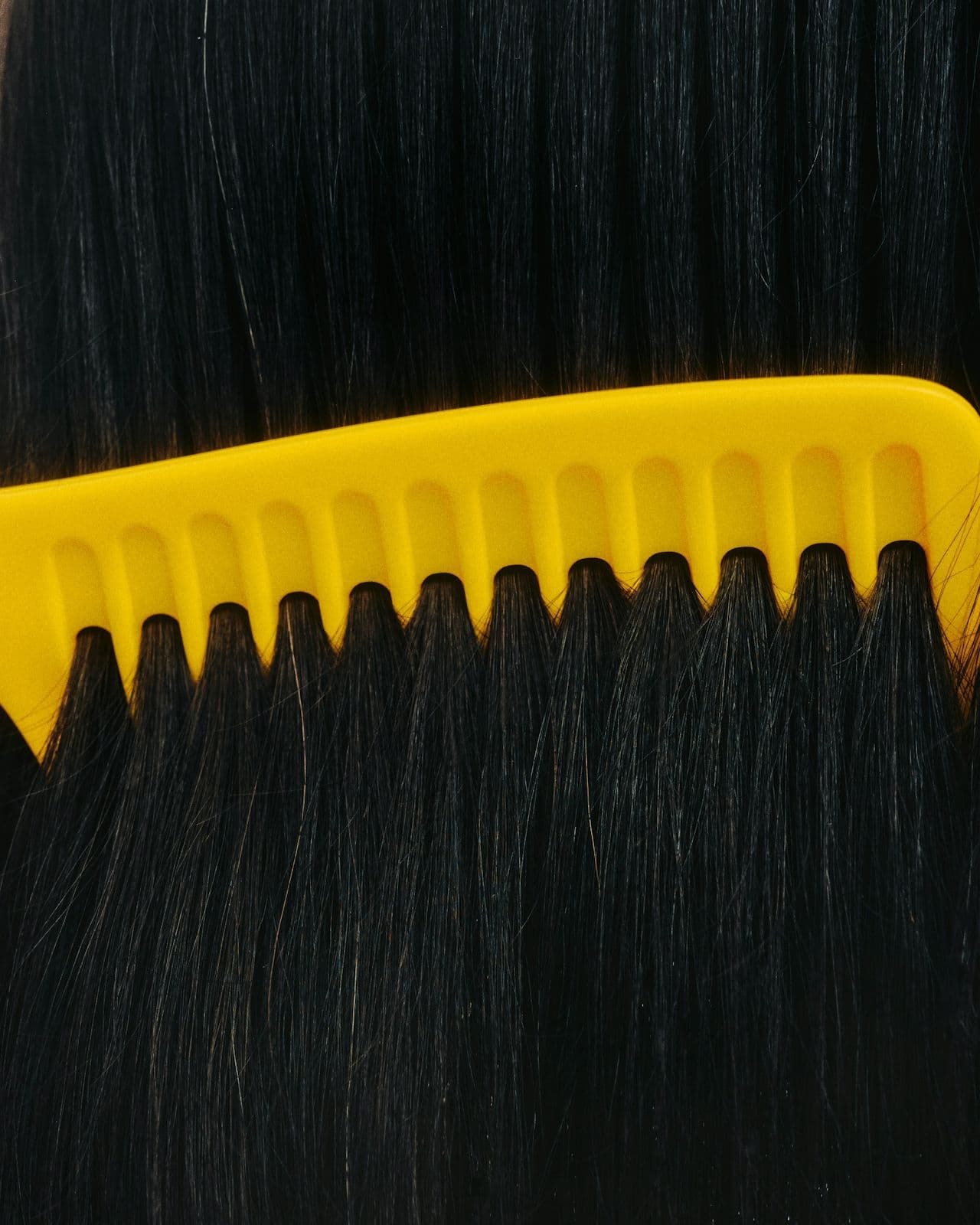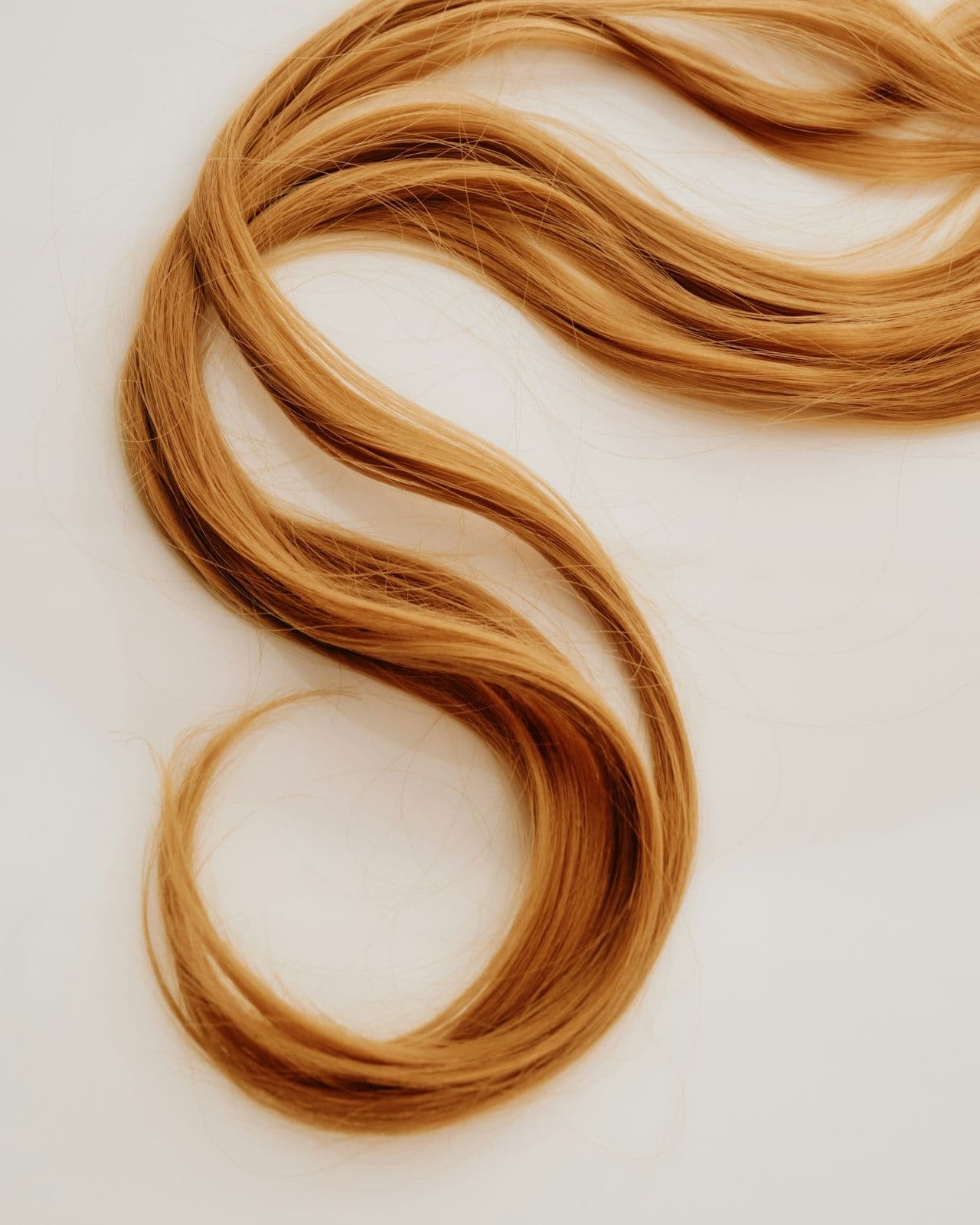Buying a wig for the first time, especially while you’re navigating cancer treatment, can be intimidating. There are lots of questions: Is synthetic okay? Is it itchy? How do I care for it? Is it always going to look like I’m wearing a wig? What exactly is ‘monofilament’?
This can be a tough or fun, or a tough-fun combo experience. Coming in prepared can help ease the nerves. Here’s Jadey’s guide with tips, advice, a glossary, and support to help you navigate wig shopping with confidence.
First, know that wearing a wig is just one option
You’re under no imperative to wear a wig. If the whole thing sounds like a big fuss, you don’t need to try and find a faux-hair option that’s exactly like the hair you’ve lost or may lose. Maybe you'd rather rock your hair (or lack of hair) in whatever form it takes during treatment or maybe you’re kind of looking forward to tying some beautiful silk scarves just so. And buying a wig doesn’t mean you have to wear it everyday.
When Lauren McDermott, 22, was diagnosed with breast cancer in 2024, she knew hair loss would be a part of it and she decided to embrace it all. She tried out all the different wigs and hair colors, scarves, headbands, and rocked the bald head. There’s not one correct way to manage hair loss. The choice is entirely yours.
If you want a wig, do a little preliminary prep
First, chat with your oncologist. Suzanne Chimera, a custom wig designer since 1994 and co-founder of Hair We Share (a nonprofit that provides children and adults facing medical hair loss with human hair wigs at no cost), explains people sometimes have allergies to certain types of wigs, and so it's always best to speak with your doctor about getting a wig.
Plus, your doctor can connect you with the social worker at your hospital, who will likely know about all the different resources in your community for getting wigs. There are some organizations that can donate wigs, like Hair We Share and Wigs and Wishes, and some states offer local resources. Your hospital might have their own wig boutique, or have connections to local wig boutiques. Katie Goodman, an outpatient oncology social worker for Seidman Cancer Center at University Hospitals in Cleveland, says patients in her area have access to free wig fittings through local cancer wellness centers.
And try to get to it before treatment starts. After, it can be tough to find the time and energy to go out wig shopping. Erica Broderick, owner of The Wig Outlet in New York recommends trying to go wig shopping before you start losing your hair. “The wig professionals can have a nice idea of what your hair texture, color and style is prior to treatment, and [going before] allows the process to be less drastic. The client can also feel less pressured to rush and make a decision,” she says.
If you go after treatment starts, we suggest saving a lock of your hair to help your stylist better understand your hair texture, and bring in some pictures if you’d like to match your wig to your natural hair. Some wig boutiques may also offer virtual wig fitting appointments, or home appointments where they bring wig options to you, which are good options if you’re getting a wig after treatment has started.
It's also worthwhile to look into whether your insurance might cover the cost of a wig for medically induced hair loss. “Call your insurance company because some will cover all or a portion of the wig for treatment,” says Kristin VandenBrink, the owner of Beautiful Me Hair Studio, a salon that specializes in styling women with medical hair loss, “a lot of people don’t know that.” (The Wig Outlet has a very useful guide to filing these kinds of insurance claims, and making a more convincing argument to get them to cover your wig.)
Some things you’ll want to consider when wig-shopping
- Color, style and cut: more important for synthetic wig shopping, which has more limitations for adjustments
- Wig materials: human hair wig or synthetic
- Comfort and fit: comfortability is essential, adjustable straps, cap sizes and breathable materials
- Durability and maintenance: consider time and willingness to invest in maintaining your wig, especially based on the type of wig
- Price: wig prices vary on hair, brand, and quality
If you’re getting a custom wig, they’ll often conduct a personal consultation and send a form with color charts, and measurements. Chimera suggests visiting a stylist after you get your wig for a touch-up trim; some wig shops may do this in-house or have a recommended stylist.
The Terms to Know for Wig Shopping
Synthetic Wig
Synthetic wigs are made from artificial fibers. These fibers are designed to replicate the look and texture of natural hair, commonly using materials such as acrylic, nylon or polyester.
Wig Cap
A wig cap is a protective base that holds a wig in place on the scalp. It helps provide a secure fit while offering comfort. The cap keeps natural hair hidden and smooth underneath the wig.
Wig Band / Wig Grip Cap
This is a headband that allows you to wear a wig without the need for clips, pins, adhesives or combs. It helps the wig lay flat for a natural look. It should provide a more comfortable fit and feel while wearing a wig. Different wigs and toppers need different gripper headbands.
Lace Front
A lace front wig has a sheer lace material along the front of the hairline, allowing for a more natural looking blend between the wig and the scalp. The lace material is thin allowing it to be almost invisible, creating a realistic look.
Monofilament Wig
Monofilament wigs are made from high-quality, thin mesh fabric that allows the scalp to show through, creating a natural looking appearance. Due to its thinness, it gives your scalp visibility through the fabric.
Toppers
A hair topper is a hairpiece that covers thin or patchy spots on the top of your head. Unlike a wig, which covers your whole head, toppers only cover a portion of your head.
Stocking Caps
A stocking cap is a close-fitting, stretchy cap worn underneath a wig to secure natural hair, giving it a stable fit. It holds the hair flat under the wig.
Human Hair vs. Synthetic Hair
Human Hair Wigs
Human hair wigs are made 100% real human hair, so they’ll look and feel more like what you are accustomed to with your hair. These wigs offer more styling freedom compared to synthetic wigs—they can be cut, colored, and heat styled just like your own hair, so they’re great for if you’re someone who likes playing with your hair and styling it. They react to the weather just as human hair does, and hold dents and bends just like human hair (you know how your hair might sometimes show a dent after taking out a hair tie that you've worn for hours—a human hair wig will do the same thing). With proper care, they can last years longer than synthetic wigs and they also cost a lot more, due to the material and production.
Synthetic Hair Wigs
Synthetic wigs are made from artificial fibers. These wigs are often more affordable and lower maintenance than human hair wigs. They’re pre-styled and hold their shape. After you wash them, they dry right back into shape, so they are pretty much always ready to wear. They can sometimes be dyed, but typically once they’re styled and shaped for you, there’s not too many changes you can make.
Pricing
“Synthetic wigs will run anywhere from $300 to $800, depending on where you purchase them,” said VandenBrink. “And the human hair wigs generally run a couple thousand dollars."
The price is largely dependent on where the hair is sourced from and the length, says Broderick. If you are looking for hair length that goes below your shoulders, she typically suggests human hair, but the cost for human hair wigs is usually a lot higher, and there are still a lot of great synthetic options. For synthetic wigs, the price is also dependent on the quality of the fibers used. Both human and synthetic wigs can come in different cap constructions which can impact price, from the lightest weight and hand-tied options (which would be more expensive), to basic machine caps (which would be cheapest), says Broderick.
Hair type
When Broderick is consulting with a client, she wants to make sure she understands their lifestyle and relationship to their hair, to make sure they’re getting the best wig for the price point most appropriate for them. Typically, a wig specialist will take into account your hair color, hair density (how thick and voluminous your hair is), and the way you like to style it when helping you choose the best hair for you. When it comes to density, you’ll probably want a wig with density similar to your own hair, which is another reason why it’s helpful to go in person and have lots of options to try. Plus, Broderick says wig stylists can typically thin out and trim wigs to adjust for your preferred density.
Wigs with textured hair, especially from Black women, can be hard to come by, says Chimera, who notes the limited availability of wigs that truly reflect the unique textures and identities of Black women. When working with women who have textured hair, Hair We Share typically perms straight hair wigs, giving it a permanent wave or curl to more closely resemble natural, textured hair.
Coils to Locs is a company founded by sisters Dianne Austin and Pamela Shaddock that provides high-quality synthetic wigs designed specifically for Black women experiencing medical hair loss. Their wigs are available in cancer center hospitals, medical hair loss salons, and on their online store.
Caring For Your Wig
Wigs, whether human or synthetic, require a bit of special attention to ensure they remain in good condition for as long as possible. (Check out our guide here for all the products you need to care for your wig.)
- Store your wig properly: When you are not wearing it, place your wig on a wig stand or mannequin head. This helps to keep the shape and the hair from tangling
- Use wig-specific hair products: only use products like shampoo and conditioner that are specifically for the type of wig you have (synthetic or natural). Broderick recommends if you have a synthetic wig, to use the shampoo and conditioner sold by the brand of wig you have, and if it’s human hair, she suggests anything super basic (a drugstore brand like Suave is great).
- Be careful with heat styling: Don’t use a blow dryer, curling iron, or flat iron unless your wig is heat resistant (such as a human hair wig). Synthetic wigs do not do well with heat which can cause damage.
Managing your scalp
When it comes to managing your scalp with a wig, you’ll want to make sure you’re still cleansing regularly and moisturizing to prevent irritation and sores. Broderick says a lot of the time, she has clients who try not to wash their hair regularly to prevent it from falling out, but typically, it will fall out either way and it’s more important to care for your scalp properly. Stick to gentle, fragrance free shampoos and conditioners, or face washes like Cetaphil if your scalp is bare.
For sensitive scalps, Chimera suggests using a wig grip cap or velvet band to create a barrier between the wig and scalp. “There are lots of products available now to protect the scalp,” Chimera says, and she typically does not recommend pull-on stocking caps. “They’re a nuisance,” she says, and many people can find them annoying.
A wig may not be for you, or it can be for you some days and not others. Treatment is hard, and sometimes the hair loss that comes with it can feel like a signal waving to the world that you’re sick. Lauren doesn’t wear a wig everyday, but when she does, it’s a way to help her feel normal. “It’s nice to feel like you can just be someone who doesn’t have cancer for a little bit. It’s nice to walk into a room and kind of feel like you blend in.”









